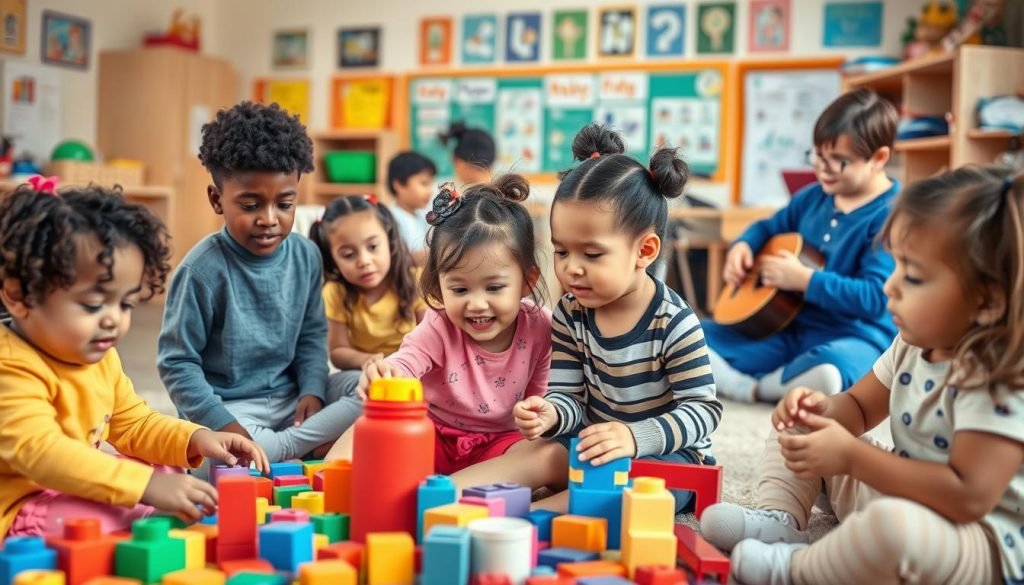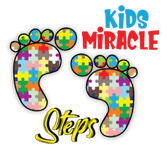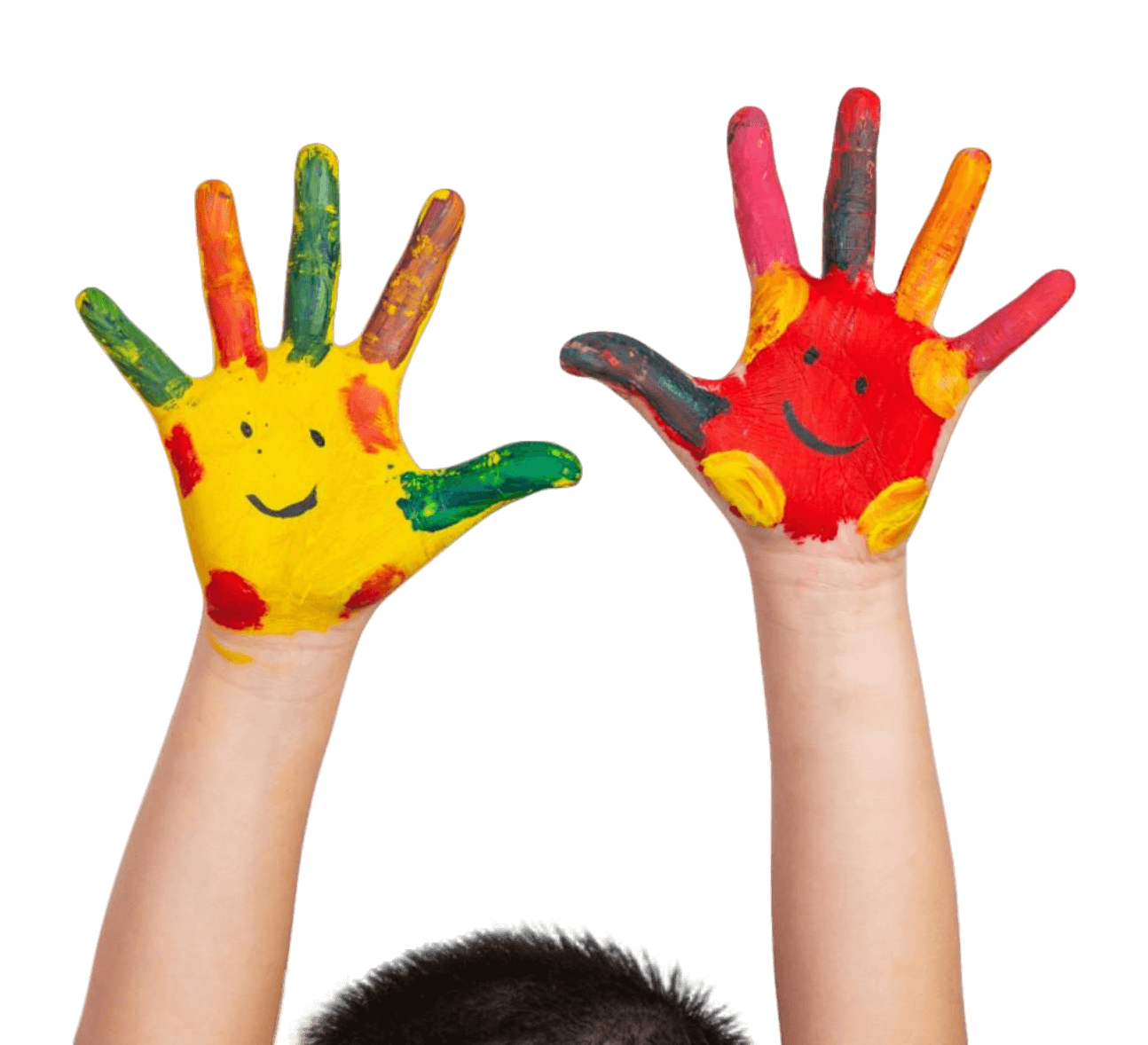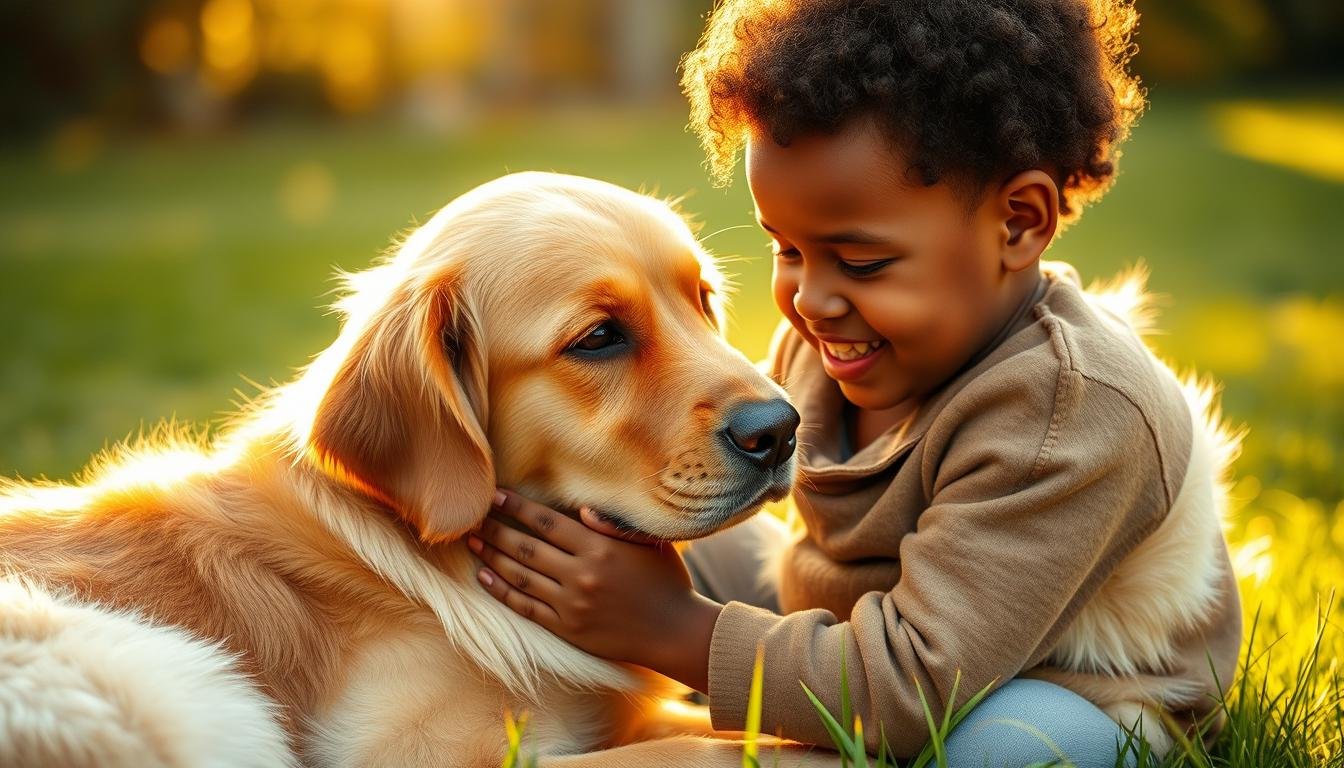Ever thought about connecting with a child who doesn’t talk? You’re not the only one. Finding ways to communicate with non-verbal children can change things big time. It helps them grow and strengthens your bond.
It’s essential to understand how non-verbal kids communicate, especially if they have special needs. About 25% of kids with Autism Spectrum Disorder (ASD) don’t speak much. But, recent research shows these children can still learn to communicate better as they grow. (Source: The proportion of minimally verbal children with autism spectrum disorder in a community-based early intervention programme)
We aim to provide families with helpful ways and create a caring community. Non-verbal cues like gestures and looking at each other help kids start to understand language. There are many ways to interact without speaking, like using pictures or playing together. Studies have found that using sign language or Makaton can really help. Kids might start to express themselves 50% more after using these tools regularly.
Remember, each child with autism is different. What helps one child might not help another. But, many can learn to share their thoughts using pictures and special technology. Let’s explore these methods together. They could be exactly what you need to talk to your non-verbal child.
Understanding Non-Verbal Communication
Non-verbal communication is vital in how we show ourselves and connect with others. This is especially true for kids who can’t use words to speak. Dr. Albert Mehrabian’s studies show that a huge 93% of communication is non-verbal. This includes the tone of voice, facial expressions, gestures, and how we stand or sit. Knowing these non-verbal signs is key when talking to kids who communicate this way.
Looking at a child’s facial expressions and gestures can tell us a lot about how they feel and what they need. For example, a smile or frown can show if they’re happy or upset. Their gestures can tell us if they want something specific. By paying attention to these signs, we can better understand and help them.
It’s important to see that non-verbal kids show their feelings in different ways. Some might use big gestures, while others might use small facial expressions. We need to keep an open mind and not guess their understanding just by their verbal skills. This can make them less frustrated and anxious, which might stop bad behaviors like tantrums.
Offering more than just “yes” or “no” questions can make talking more fun and open. Giving choices helps create a better chat environment. Using humor carefully can also ease stress and make a stronger bond during talks.
Most of all, we need to be patient and keep trying. Understanding non-verbal kids takes time, care, and a willingness to learn from how they communicate. This effort helps us have better talks and lets our kids show who they truly are.
Utilizing Visual Supports and Assistive Technologies
Effective ways to help non-verbal children talk include visual aids and assistive devices. Learning to use these can greatly boost how kids show what they need and think. 90% of parents say using visual supports helps in daily life. Communication boards, pictures, and apps are key for clear, steady conversations.
There’s a wide range of tools for non-verbal children, from simple Velcro boards to advanced electronics. The Picture Exchange Communication System (PECS) teaches using pictures in six steps. Visual aids, like feeling thermometers and custom visuals, cut down frustration by 70%, parents note. Communication boards grow with the child, adding more detailed images over time.
Now, kids can use high-tech gadgets to talk by typing or picking pictures. Having teachers help choose these tools ensures they fit each child’s needs. Plus, adding visual aids in classes improves behavior by 75%, studies show.
Engaging in Play and Social Interaction
Play therapy for kids is amazing for those who don’t talk much. It helps them share their feelings through fun activities like dancing and art. These activities are especially good for children with autism. They enjoy games that involve taking turns, which teaches them how to communicate.

Studies show that fun, interactive activities help kids with special needs a lot. For example, using visual aids during play helps them share their thoughts better. The CDC says starting early with these kinds of play is key.
Autistic kids might not act like other kids their age. But play gives them a chance to learn and grow. Experts like Peter Mundy show that play can improve behaviors unique to autism. Games that teach taking turns and getting comfortable around others are great.
- Games where kids take turns help them talk better.
- Group games make being with others easier.
- Visual schedules show kids what to expect, making playtime smoother.
In Pembroke Pines, families can find ten awesome speech therapy exercises to do at home. Adding these to your daily routine can really help your child. Keeping up with these fun activities at home makes a big difference in their skills.
Imitation and Modeling to Encourage Communication
Children often learn to talk and interact by imitating others. This is super important for kids who don’t speak much yet. When we copy their actions or sounds during play, it helps them get better at communicating. This approach builds trust and encourages them to share more.
Learning to imitate can really boost kids’ language skills and how they get along with friends. They also become better at following directions. For kids with autism, being good at imitation can improve how they do in school and interact.
Games like “Head, Shoulders, Knees, and Toes” and “Simon Says” are great for teaching kids to imitate while having fun. They offer a playful way to learn, which feels less scary. Adding cheers and rewards keeps them eager to learn more.
About 25% to 30% of kids with autism don’t speak. This fact shows how much we need to find good ways for them to express themselves. Playing together and focusing on mirroring each other can ease their frustration. It gives them a clear way to share their needs and feelings.
In the end, using imitation to teach kids how to communicate can make a big difference. It makes chatting and playing together more effective in helping them. This method is a key part of helping kids who don’t talk much yet.
Effective Ways to Communicate with a Non-Verbal Child
Communicating with non-verbal children, especially those with ASD, needs various strategies and patience. In the United States, about 1 in 44 children is identified with ASD. Of these, 25-30% do not speak. Finding the right way to talk to each child can make a big difference. It helps overcome obstacles in autism communication.
Parents and caregivers should know that kids with autism might need more time to learn to communicate. Adding pictures and symbols to daily life can greatly help. Studies show that visual aids work 80% better for them than words. Tools like the Picture Exchange Communication System (PECS) improve communication by half.
Getting advice from speech therapists is crucial. They can boost communication methods by 70%. These experts offer customized tips that suit each child. Working together with teachers ensures consistent communication. This team effort boosts the child’s support network by 50%.
Play and socializing are key too. Non-verbal kids often express themselves well through play. This might involve building with blocks, doing sensory activities, or music therapy. Around 40% of these children react well to puppets or cartoons during communication. This shows the power of creative methods.
Imitating and showing different ways to express things help a lot. Simple sign language, like Makaton, cuts down frustration. It helps kids share their needs and wishes. Such methods can double the communication attempts in six months. Positive feedback makes this improvement even more likely, boosting success by 60%.
A calm space with fewer distractions and a clear routine can improve communication by 30%. Listening well makes kids feel heard and more likely to try talking, raising their effort by 40%. Using all these strategies together can overcome autism communication challenges. Adapting these methods lets us connect more deeply with non-verbal kids.
Conclusion
As our journey through non-verbal communication wraps up, we see the importance of patience and customized strategies. We’ve looked at how visual aids, tech tools, and social play can help. They offer great ways to support kids who do not speak.
With help early on, children can make big strides. It’s crucial to find out which tools click with your kid. Using picture boards, sign language, or apps can open up new ways to chat. Combining different methods, like ABA and speech therapy, often leads to good results.
We urge you to try these methods and watch closely what helps your child. The path can be tough, but the rewards are huge. Keep building a supportive space with us. If you need more help, Kids Miracle Steps has lots of resources for special needs families. Your dedication and love make all the difference in your child’s growth. Thanks for joining us on this path.






